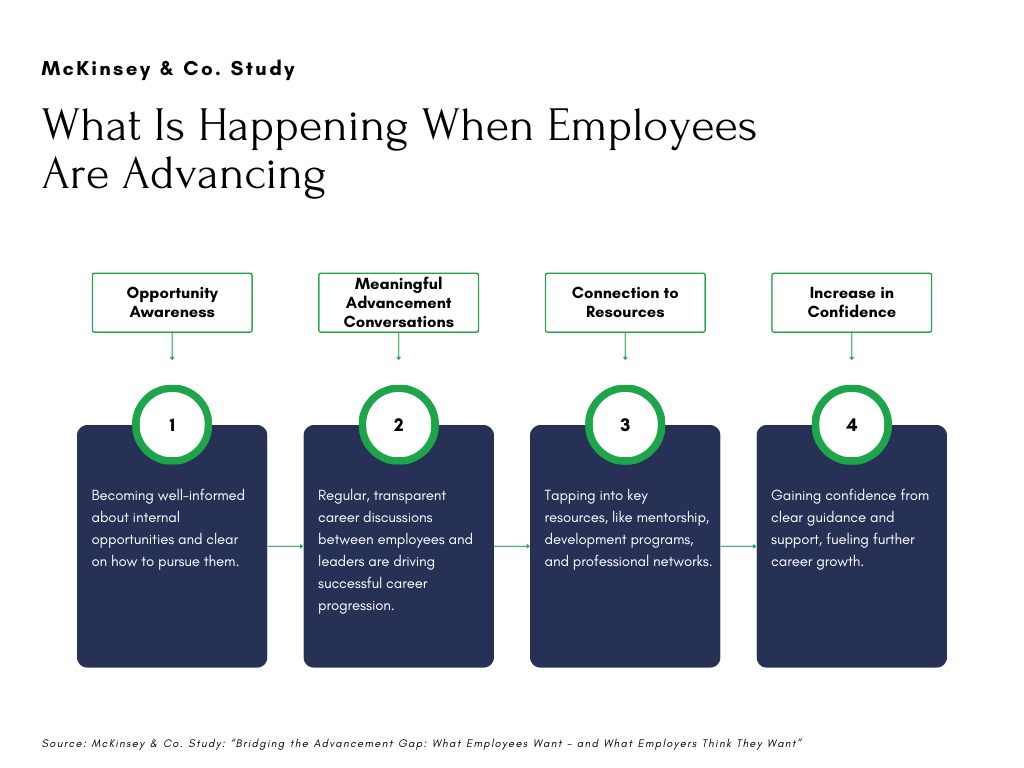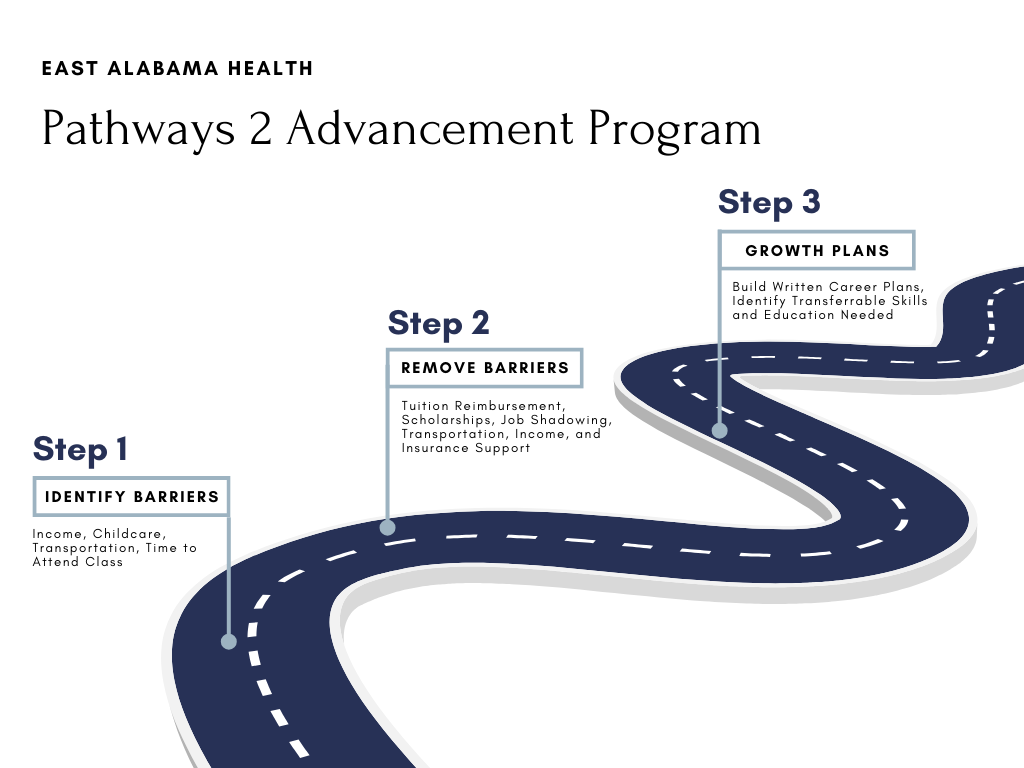The East Alabama Health (EAH) health system includes two hospitals, 3,700 associates and 380 physicians. EAH includes East Alabama Medical Center in Opelika, AL and EAMC-Lanier Rural Emergency Hospital in Valley, AL. Additional providers in the EAH system include a cancer center, a cardiovascular outpatient center, two ambulatory surgery centers, mental health services, and its newest addition–the Auburn Medical Pavilion. EAH’s mission is to provide high-quality, compassionate health care, which drives the health system’s commitment to develop and invest in its workforce.
For almost 20 years, EAH has been known regionally as a destination employer for frontline staff because of its tradition of growing internal talent. Open roles can be hard to recruit for, so EAH focuses on ‘building its own.’ To maintain and build on a commitment to frontline employees, EAH fully integrates workforce development into organization strategy and mission.
Susan Johnston, the CHRO at EAH, acts as a mentor to associates who participate in EAH’s workforce development programs. She mentions “you sometimes have to show associates that EAH can remove stress and barriers. Student associates have a history of impossibility; it takes someone showing we’re here to help and will also keep you accountable for growth. We help with career advising, but it is much more than just that. What were an employee’s aspirations coming out of high school when they dreamed big? We want to get them back to that, to dream bigger.”
Pathways 2 Advancement Program
EAH offers entry-level, clinical and non-clinical frontline staff a suite of programs called Pathways to Advancement (P2A). Offered quarterly to 20 high-potential associates, P2A delivers a 6-week career planning and professional development program leveraging Catalyst Learning’s Workforce Development Model. Participants assess their skills and career goals, explore career opportunities within EAH, and create personalized career plans. Along the way, they enhance their core workplace skills through a diverse range of educational modules focused on communication, critical thinking, and other key competencies. These skills equip them for success and career advancement within the organization.
EAH’s workforce development approach aligns with findings from McKinsey & Co.’s study “Bridging the Advancement Gap: What Employees Want – and What Employers Think They Want.” EAH’s P2A program addresses each of these key areas, providing associates with the support and tools they need to grow in their careers.

EAH realizes that with entry-level associates, removing as many barriers as possible to encourage growth is vital to their success. When adult learners begin exploring career paths with EAH, Ms. Johnston and her team meet with each of them to review Work Keys and Job Fit assessment results, as well as how to apply them to target jobs. Ms. Johnston encourages associates to focus on building written career goals and to envision a role expansion opportunity. The HR team reviews associates’ written goals and discusses needed training and certification. They then build individual growth plans for associates and remove identified barriers.
China Parker is a shining example of the benefits of this hands-on approach. Ms. Parker worked in Nutrition & Food Services at EAH’s Opelika hospital. She developed her career plan and enhanced her skills as part of the P2A program. After completing the program, she envisioned future success and obtained a computer coding certification. HR encouraged the Revenue Cycle/Medical Records hiring manager to consider her for a posted coding role. She entered EAH’s coding program last fall and has been an exemplary employee. She now has a much larger income and helped fill a hard-to-place role at EAH.
Removing Barriers & Envisioning Growth

Workforce Planning and Local Education Partnerships
EAH knows that matching its local workforce to higher-need roles for the future is important. The HR team does a GAP analysis of what its needs are now, identifies future needs, and forecasts worker pipelines to those high-need roles. EAH looks at upcoming retirements, historical or seasonal role turnover, and upcoming expansion projects to better map out critical roles. While these high-need roles vary, CNAs, coding and radiology modalities like rad-techs are always crucial.
One example of role forecasting is how EAH looks at its maintenance and facilities team, half of which will retire within two years. EAH partners with Southern Union State Community College to identify interest in maintenance positions in an effort to find and train the right workers. Southern Union also helps EAH staff focus on pre-requisites to prepare them for training programs.
To build the nursing and IP pipelines, EAH partners with Wallace State Community College for coding skills training. Chattahoochee Valley Community Colleges partners with EAH for onsite LPN training. EAH offers onsite Scrub Tech educational programs as well.
When health systems think about workforce development, they tend to think about employees and the change process needed for the individual to progress. Even more important is a mindset shift within the organization. Change management, and getting managers to promote from talent within isn’t a quick fix and nor is it easy; it takes committed leadership. A committed HR team can analyze workforce needs and match them, but the entire organization needs to be committed for “growing our own” to be integrated into organization culture.
Programs like P2A can be a lightbulb that says “there is possibility here, not impossibility” and helps employees thrive. EAH fills key roles and has become a destination employer because of employee development and key partnerships. Its investment in staff is crucial in the mission to provide the region’s best patient care and to serve its community.
